#mikhail speransky
Text
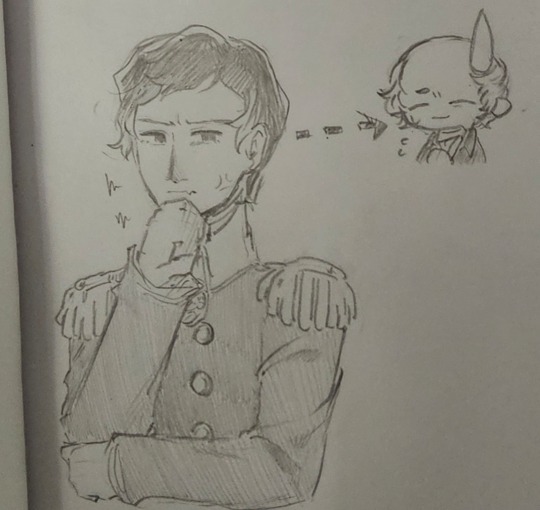






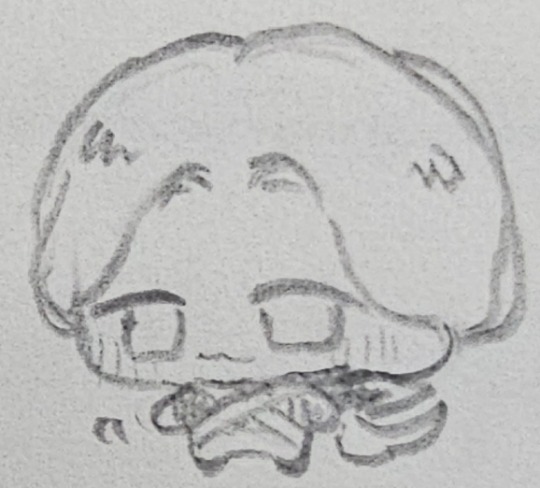

hehe
#napoleonic wars#alexey arakcheev#mikhail speransky#joachim murat#jean baptiste bessières#jean de dieu soult#bessimu#jean andoche junot#doodles
62 notes
·
View notes
Text
The last post reminded me of something I was reading up on recently. In 1812 Alexander was forced to fire Speransky, his state secretary (who’s reforms were growing unpopular with the nobles and the tsar had to placate the public), and the latter came out of the emperor’s office after the 2 hour long interview “pale and covered in tears” and when asked said that the tears weren’t his.
Alexander really called on him to fire the man and ended up being the one crying
#I can just picture it#wouldn’t be surprised if speransky had to console him also like. who’s firing who here#can he not play the victim for 5 minutes#alexander i of russia#mikhail speransky#tsar alexander i
21 notes
·
View notes
Photo
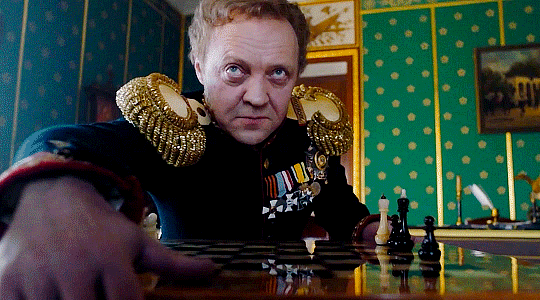

— Любой ход белых ведёт к поражению.
— И что прикажете делать?
Союз спасения. Время гнева | Union of Salvation. Time of Fury (2022), e03
#Союз спасения#Союз спасения Время гнева#Union of Salvation#Union of Salvation Time of Fury#Russian cinema#Russian TV#Александр I#Михаил Сперанский#Alexander I#Alexander I of Russia#Alexander I Romanov#Mikhail Speransky#Виталий Кищенко#Максим Аверин#Vitaliy Kishchenko#Maksim Averin#period drama#perioddramaedit#periodedits#russianperioddrama#Union of Salvation 1x03#my gifs#Speransky is my favourite character in UoS#wouldn't say the actor did his job well though
54 notes
·
View notes
Text
If money is not just a medium of economic exchange but also a political institution, then how does fiscal policy contribute to the politics of a nation? In an essay first published by Meduza in Russian, Ekaterina Pravilova, a Princeton University professor and author of “The Ruble: A Political History,” explains how the Russian imperial and Soviet governments’ refusal to outsource money supply to private banks unmoored the national currency, eroded the population’s political agency, and put the ruble at the service of the state’s autocratic and imperial ambitions.
Paper money as the monarch’s word
The history of the Russian ruble is a perfect example of the two-way relationship between national currency and political order. The first appearance of the silver ruble in the 18th century marked a Westward turn whose underlying ideology was defined and promoted by the reformist Tsar Peter I. The Petrovian reform equated the Russian ruble with the thaler (then in circulation around Europe), thereby linking the Russian monetary system with the European one.
The most significant change in Russia’s currency system was the introduction of paper assignations by Catherine II. Instead of silver and gold coins, inherently valuable because made of precious metals, the new paper money derived its value from sheer trust in the state’s promise that paper assignations could, if needed, be redeemed for “real money.”
But several years later the state reneged on that promise. Because Russia was constantly embroiled in wars, covering its expenses by printing more paper money, the value of its currency plummeted. In the late 1770s and early 1780s, a group of anonymous writers proposed to reform the Russian Assignations Bank, claiming that its capital was the imperial subjects’ common property, and that the government had no right to interfere in the balance between the national economy and currency supply — which, the writers, argued, had to correspond to the country’s volume of production. Thus Russia arrived at the idea of limiting the state’s control over money even before the French Revolution proclaimed the principle of the people’s sovereignty, rooting the legitimacy of state power in the people as its sole sanctioning source.
The constitutional ruble
In Russian history, heterodox political thought is commonly equated with opposition to state absolutism and with constitutional and parliamentary initiatives. In reality, the ideas of civil liberties and people’s sovereignty were capable of springing up outside of government and legislative contexts. The idea of a “constitutional” or “lawful” ruble, which emerged between the late-18th and early-19th centuries, was one such idea: it emerged in financial context but implied major limitations on the powers of the monarch and the state, if adopted.
What would have been the difference, then, between the constitutional and the monarchist ruble? Proponents of this reform wanted money issuance to be handled by an independent bank, rather than the state itself. They also wanted to restore the policy of freely exchanging assignations for silver. In 1809, the statesman Mikhail Speransky, the closest of advisors to Russia’s Emperor Alexander I, argued these ideas in his own fiscal reform proposal. A conservative court then denounced it as anti-national and, above all, incommensurate with autocracy.
With respect to the latter accusation, Speransky’s critics had been right. Just like any other liberal fiscal proposal of that era, Speransky’s sought to limit the state’s and the sovereign’s right to print money. In the ensuing political struggle, Speransky was pilloried and exiled, but his idea of a constitutional ruble lodged itself firmly in the minds of Russia’s liberal elites, who viewed independent banking and limiting the state’s control over money supply as a financial equivalent of constitutional rule.
From ‘liberté, égalité, fraternité’ to ‘autocracy, Orthodoxy, community’
Russia’s conservatives were themselves trying to develop a political philosophy of money, hoping to oppose it to the Westernizers’ economic ideas they considered to be alien for Russia. The conservatives’ main thesis was the imperative to trust the monarch: “If the sovereign gave us branded wood-chips and ordered them to circulate instead of rubles,” wrote the historian Nikolay Karamzin, “we would have used wood-chips.”
This ardent faith did little to remedy the fiscal situation. Towards the end of the Napoleonic Wars, the paper ruble had lost 75 percent of its original value. Awkward attempts to boost it without substantial reforms only made the problem worse. By the late 1830s, the government conducted a belated reform, devaluing the ruble to less than a third of its original value and ultimately replacing the assignations with a credit-based currency.
Outwardly, Russia’s fiscal system now resembled its European counterparts. The ruble was once again convertible to silver and might have seemed stable. In reality, the new system was a reflection of the statesman Sergey Uvarov’s famous triad, “Autocracy, Orthodoxy, Community,” formulated in opposition to the French Revolution’s motto, “Liberté, égalité, fraternité.” In contrast with the French revolutionary principles, Uvarov’s maxim encapsulated the reactionary political philosophy of Nicholas I. Unlike the bank-controlled European money supply, the credit-based Russian ruble was issued by the Finance Ministry. For the emperor, money issuance was an extension of his power. The ruble, therefore, was used to straitjacket the empire’s rebellious periphery (for instance, the Russian-controlled part of Poland, where the ruble displaced the Polish zloty).
The state’s fiscal policy was wrapped in secrecy. No one knew either the volume of the nation’s currency supply or the size of its gold and silver reserves. Unsurprisingly, after only a short time the silver standard toppled. When the Crimean War started in 1853, the ruble was once again fully de-coupled from silver.
A major cause of the ruble’s instability were wars, since they required constant outlays and undermined the economy. Even more fundamentally, the whole monetary system was geared towards servicing the autocracy rather than market demand for a medium of exchange. While liberal economists argued that only independent banks could maintain the fiscal balance, the Russian state printed money as it saw fit. After the Crimean War, some economic thinkers tried to revive Speransky’s ideas, calling to establish a money-issuing bank that would make the ruble a genuine credit currency. Yet even the so-called “great reforms” of Alexander II failed to realize this idea. In 1860, Russia established a State Bank. The ruble remained an autocratic currency.
Autocracy and war remained Russia’s main impediments to financial stability. Until 1897, the ruble remained convertible, and its unstable exchange rate only encouraged the speculators. On the eve of the Russo-Turkish war of 1877–1878, conservative elites preached patriotism over financial pragmatism, insisting that the empire’s honor depended upon the successes of its army, not the stability of its national currency. Any attempts to limit the supply of paper rubles was bound to be viewed as an attack on the Czar’s prerogative to wage war.
Gold and gold standards
By the 1880s, the gold standard had been adopted in nearly all of Europe as a system that prevents the state from printing money uncontrollably. This system also established a fixed exchange rate for national currencies when used for payments between gold-standard countries.
In this setting, the Russian Minister of Finance Sergey Vitte pushed through a fiscal reform in 1897, setting the ruble on a gold standard. This sparked immediate protest, not only from political elites, but even in business circles: the gold standard, they feared, would compromise Russia’a financial sovereignty. Liberals, meanwhile, criticized Vitte for distorting the political principles underlying the gold standard. Instead of placing an independent money-issuing bank in control of the gold reserve, Vitte’s reform increased the Czar’s and the government’s power over fiscal policy.
Unlike the European and American gold standard systems, the Russian gold standard proved to be a tool of the autocracy. With fiscal policy still in the hands of the finance minister, the emperor was free to issue credit from the State Bank’s reserves without any guarantee of repayment. This contributed to the erosion of the ruble. Countries with either private or parliament-managed central banks did not permit this kind of profligacy.
The expenditures that hit Russia during the First World War plunged the country into a financial crisis. The government proved to have been so blinded by its gold reserve that it paid no attention to the economy or the country’s financial limitations. Because Russia was buying essential goods abroad, the gold reserve was shrinking. The country was flooded with paper money of negligible buying power.
The government responded to the crisis with a campaign to replenish the gold reserves with donations from the population, calling on the Czar’s subjects to turn in their medals and wedding rings to help bolster the ruble. These calls to financial patriotism only encouraged the people to start hoarding gold, melting it down to make trinkets that could be taken out of the country. The campaign failed spectacularly, baring not only the country’s destitution but also the population’s lack of trust in the government.
The population knew full well that the “common ruble” belonged to the Czar and the government, and therefore instantly recognized “supporting the ruble” as empty rhetoric, which covered up the state’s eagerness to guard its fiscal prerogatives from encroachment by people’s representatives in the State Duma.
The Soviet legacy
Russia’s February Revolution gave rise to a strange political system that had no parliament, no constitution, and no constitutional ruble. Inflation accelerated, instantly negating the workers’ wage increases and contributing to revolutionary ferment. When they came to power, Bolsheviks did nothing to rein in the financial chaos. The money-printing press once again turned into the state’s main source of income, leading to hyperinflation. The Bolsheviks, meanwhile, weaponized money supply to undermine the moneyed classes.
In reality, the state itself had lost control over the monetary system, overrun by surrogate currencies and local financial instruments competing with the devalued ruble. When Lenin launched his New Economic Policy in 1922, it was only “new” if compared to the Civil War period. Having brought back the pre-revolutionary gold ruble and centralized money issuance, Lenin also reinstated the state-owned central bank.
That 1920s-style “gold standard” resembled the autocratic gold standard of Vitte’s era, distinguished from Western fiscal models by the government’s centrality to the monetary system. By the decade’s end, the gold standard had essentially dissolved, and the industrial credit reforms of the 1930s voided the economic value of money.
This, however, only increased the ruble’s political significance, by turning the currency into the main financial instrument of social and political control over the population. What the government termed the “monetary reform” of 1947 came down to exchanging old rubles for new money at the rate of 10 to one. At the same time, the government capped the sums it would accept for exchange at 3,000 rubles, deposited at the state savings bank. In addition, rations cards, food allowances, and commercial and farm pricing were also disposed with, in favor of a fixed pricing system that favored the government by making goods more expensive for the people. The reform robbed the population of its savings, once again highlighting that, instead of offering them power, Soviet money turned the people into hostages of the state.
Rumors of upcoming savings confiscations plagued the 1950s and 1960s, triggering panics that emptied store shelves as people sank their money into valuables from fur coats to grand pianos.
After the reforms of the late 1980s, the absolutist Soviet philosophy of money, which robbed the citizens of political agency, seemed destined for oblivion. In practice, though, the reforms of 1991 and 1993 reproduced the Soviet and imperial models: the state once again shifted the costs of inflation and economic chaos to the population. It was the money reform of 1993 that occasioned the famous phrase of Russia’s Prime Minister Viktor Chernomyrdin: “We wanted what’s best, but it turned out as always.”
The Soviet and imperial past are still inherent in the monetary system Russia has today. The Bank of Russia — heir to the state banks of the USSR and the Russian Empire — has, of course, a lot more autonomy than its predecessors did. Still, despite its nominal independence, it must contend with the so-called “power vertical” whose subjects are fully integrated into a system of total control.
Although the central banks of other countries also depend on governments to some extent, their decades (sometimes centuries) of experience in bargaining with the state let them resist such pressures much more effectively. In Russia, on the other hand, it is the state that has centuries of experience in controlling money, which makes the Russian ruble but flesh of the regime’s flesh.
10 notes
·
View notes
Text
Most of the Russian Empire was acquired by military conquest, or by diplomacy backed up by the force of arms. Pacification of a conquered territory could be brutal. But once control was established, the approach was different. After subjugating Kazan, Ivan IV gave to the Kazan nobles the opportunity to join the Russian nobility, to continue to enjoy many of their privileges and to make up an important part of the administration of Kazan and the surrounding area. This set the pattern for much of colonial rule, which relied on the co-optation of local elites into the ruling Russian class. In the nineteenth century Georgian and Armenian nobles in particular played leading roles in the army and the civilian administration. Alexander I initially antagonised the Georgian nobility by abolishing its Bagratid monarchy. And yet, after a number of early revolts, by the 1860s the Georgian nobles were a fully integrated part of the Russian noble system. Ukrainians and Belorussians were generally treated as though they were Russians, which made it difficult for culture to flourish, but elsewhere national life for the few non-Russian intellectuals was lively, while local customs, religions and traditions were generally allowed to continue unhindered. While missionaries from the Russian Orthodox Church were active in Muslim areas, especially along the Volga, they had no special powers and only half-hearted support from the Russian state. Less-developed tribes, especially the numerous small ones scattered in Siberia and the North, were more subject to missionary activity than other peoples and, unlike other nationalities, were not invited to participate in Catherine the Great’s Legal Commission in 1767. Nomads in particular were treated with suspicion, but as the empire formally assumed control of the Kazakh lands in 1822, Alexander I’s chief reformer and prime minister, Mikhail Speransky, issued an administrative code for these ‘inorodtsy’, which granted even them a certain amount of self-administration and safeguarded the privileges of their elites.
— Jeremy Smith, Red Nations (2013)
9 notes
·
View notes
Photo

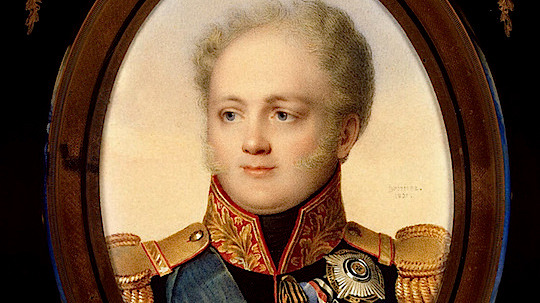

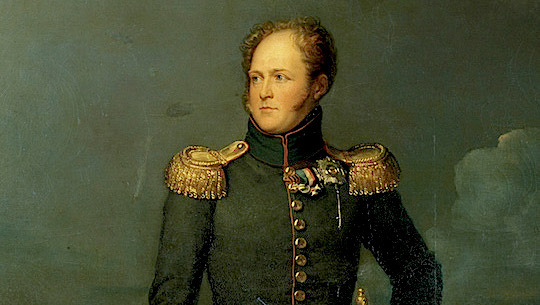
History week meme - 1st-7th November
day 5: one man
Alexander I (December 23, 1777 – December 1, 1825) was emperor of Russia from March 23, 1801 – December 1, 1825 and king of Poland from 1815–1825, as well as the first Grand Duke of Finland.
Alexander was born in Saint Petersburg to Grand Duke Paul Petrovich, later Emperor Paul I, and Sophie Marie Dorothea of Württemberg (Maria Fedorovna). As was the case with his father Paul, Alexander was taken from his parents immediately after birth by his grandmother, Catherine the Great, who had him brought up among her Court, away from his mother and father. Alexander received an excellent education: when selecting his tutors, the Empress Catherine consulted with the best minds of the time, in particular with the French Enlightenment philosopher Denis Diderot. Catherine prepared her grandson to become heir to the throne, and planned to transfer power directly to him, bypassing his father, her estranged son, Paul. The Empress saw in her grandson the future ideal monarch and an heir to continue her many programs and plans.
Alexander ascended to the throne as a result of a brutal palace coup, in which his supporters murdered his father, Paul I. Alexander was aware of the coup, but was convinced that Paul would simply be ousted from the throne, and that his life would be spared. Ascending the throne, Alexander's first manifesto promised that he would govern the country according to the principles of his grandmother, Catherine the Great.
Alexander tried to instate a rule of law based on government apparatus, under which the social class structure, the relationship of the classes with each other and with the higher powers, and the activities of all administrative bodies were guaranteed by fundamental laws of state that proceeded from an enlightened monarch. Alexander reformed the state administration, creating in 1801 a system of ministries under the direction of a Cabinet of Ministers, and established a legislative advisory body, the State Council, in 1810. Under the leadership of Mikhail Speransky, Russian legislation was systemized and the Complete Collection of Laws of the Russian Empire compiled. Plans were drafted for the phased abolition of serfdom, but were not actually implemented, and only the Law on Free Cultivators was published, which allowed the nobles to voluntarily liberate their serfs and grant them land.
Alexander greatest achievement was his victory over Napoleon, who had attacked Russia in 1812, and marched with his Grande Armée from France to Moscow, but was then expelled from Russia and later defeated by a coalition of allies, Russia among them. Over the course of a number of diplomatic congresses, victorious Russia played an impressive role in determining the political restructuring of post-Napoleonic Europe.
The strange contradictions of his character make Alexander one of the most interesting as he is one of the most important figures in the history of the 19th century. Autocrat and "Jacobin", man of the world and mystic, he appeared to his contemporaries as a riddle which each read according to his own temperament. x
#historyedit#history#alexander i of russia#tsar Alexander i#19th century#kings and queens#kings#history week meme#my edit
55 notes
·
View notes
Text
What was it like for the average citizen to live in Russia?
When Alexander I came to the throne in March 1801, Russia was in a state of hostility with most of Europe, though its armies were not actually fighting; its only ally was its traditional enemy, Turkey. The new emperor quickly made peace with both France and Britain and restored normal relations with Austria. His hope that he would then be able to concentrate on internal reform was frustrated by the reopening of war with Napoleon in 1805. Defeated at Austerlitz in December 1805, the Russian armies fought Napoleon in Poland in 1806 and 1807, with Prussia as an ineffective ally. After the Treaty of Tilsit (1807), there were five years of peace, ended by Napoleon’s invasion of Russia in 1812. From the westward advance of its arms in the next two years of heavy fighting, Russia emerged as Europe’s greatest land power and the first among the continental victors over Napoleon. The immense prestige achieved in these campaigns was maintained until mid-century. During this period, Russian armies fought only against weaker enemies: Persia in 1826, Turkey in 1828–29, Poland in 1830–31, and the mountaineers of the Caucasus during the 1830s and ’40s. When Europe was convulsed by revolution in 1848,Russia and Great Britain alone among the great powers were unaffected, and in the summer of 1849 the tsar sent troops to crush the Hungarians in Transylvania. Russia was not loved, but it was admired and feared. To the upper classes in central Europe, Nicholas I was the stern defender of monarchical legitimacy; to democrats all over the world, he was “the gendarme of Europe” and the chief enemy of liberty. But the Crimean War (1853–56) showed that this giant had feet of clay. The vast empire was unable to mobilize, equip, and transport enough troops to defeat the medium-size French and English forces under very mediocre command. Nicholas died in the bitter knowledge of general failure.
Alexander I as a young man had longed to reform his empire and benefit his subjects. His hopes were disappointed, partly by the sheer inertia, backwardness, and vastness of his domains, partly perhaps because of defects of his own character, but also because Napoleon’s aggressive enterprises diverted Alexander’s attention to diplomacy and defense. Russia’s abundant manpower and scanty financial resources were both consumed in war. The early years of his reign saw two short periods of attempted reform. During the first, from 1801 to 1803, the tsar took counsel with four intimate friends, who formed his so-called Unofficial Committee, with the intention of drafting ambitious reforms. In the period from 1807 to 1812, he had as his chief adviser the liberal Mikhail Speransky. Both periods produced some valuable administrative innovations, but neither initiated any basic reform. After 1815 Alexander was mainly concerned with grandiose plans for international peace; his motivation was not merely political but also religious—not to say mystical—for the years of war and national danger had aroused in him an interest in matters of faith to which, as a pupil of the 18th-century Enlightenment, he had previously been indifferent. While he was thus preoccupied with diplomacy and religion, Russia was ruled by conservatives and reactionaries, among whom the brutal but honest Gen. Aleksey Arakcheyev was outstanding. Victory in war had strengthened those who upheld the established order, serfdom and all. The mood was one of intense national pride: Orthodox Russia had defeated Napoleon, and therefore it was not only foolish but also impious to copy foreign models. Educated young Russians, who had served in the army and seen Europe, who read and spoke French and German and knew contemporary European literature, felt otherwise. Masonic lodges and secret societies flourished in the early 1820s. From their deliberations emerged a conspiracy to overthrow the government, inspired by a variety of ideas: some looked to the United States for a model, others to Jacobin France. The conspirators, known as the Decembrists because they tried to act in December 1825 when the news of Alexander I’s death became known and there was uncertainty about his successor, were defeated and arrested; five were executed, and many more sentenced to various terms of imprisonment in Siberia. Nicholas I, who succeeded after his elder brother Constantine had finally refused the throne, was deeply affected by these events and set himself against any major political change, though he did not reject the idea of administrative reform. After the Revolutions of 1848 in Europe, his opposition to all change, his suspicion of even mildly liberal ideas, and his insistence on an obscurantist censorship reached their climax.
0 notes
Quote
There are no truly free people in Russia, apart from beggars and philosophers.
Mikhail Speransky, 1802
5 notes
·
View notes